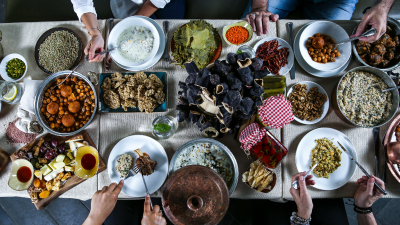 Anatolia, a geographical region that has hosted many civilizations from ancient times to the present, has a deep-rooted cuisine culture. The cultural communication between regions exists in many aspects of life in Anatolia, which has a rich cultural mosaic. Cuisine is one of them. Eating and drinking culture is inspired by cross-border countries and interacts among itself, creating a rich food archive.
Anatolia, a geographical region that has hosted many civilizations from ancient times to the present, has a deep-rooted cuisine culture. The cultural communication between regions exists in many aspects of life in Anatolia, which has a rich cultural mosaic. Cuisine is one of them. Eating and drinking culture is inspired by cross-border countries and interacts among itself, creating a rich food archive.
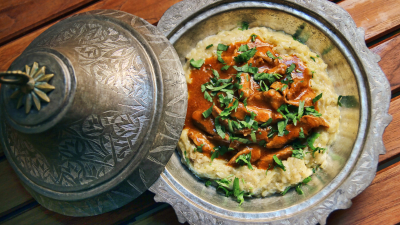 The transition from nomadic life to settled life makes it inevitable for human beings to create an "archive of flavors" unique to their own region with their own imagination and the food culture from their family roots. Anatolia also has an extremely rich and inspiring story in this respect. The food culture, which consisted of only hunted animals and plants, vegetables and fruits from nature, has become richer over time and found itself. Afterwards, grains and legumes were included and the necessity of eating and drinking turned into an art.
The transition from nomadic life to settled life makes it inevitable for human beings to create an "archive of flavors" unique to their own region with their own imagination and the food culture from their family roots. Anatolia also has an extremely rich and inspiring story in this respect. The food culture, which consisted of only hunted animals and plants, vegetables and fruits from nature, has become richer over time and found itself. Afterwards, grains and legumes were included and the necessity of eating and drinking turned into an art.
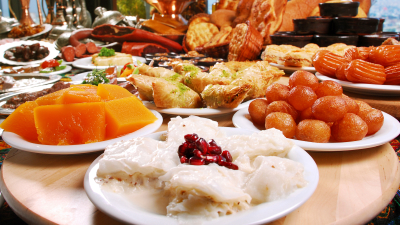 During the Ottoman Empire period, the food diversity presented to the taste of the sultan and the palace members constituted the basis of the Ottoman Palace cuisine. The food diversity in this distinguished cuisine also forms the basis of the current Turkish cuisine. In the palace cuisine mainly consisting of meat dishes, the meals were always accompanied by sweet-smelling and appetizing sherbets. The effects of Ottoman Palace cuisine, where milk and sherbet desserts were preferred for dessert, are still felt in today's cuisine.
During the Ottoman Empire period, the food diversity presented to the taste of the sultan and the palace members constituted the basis of the Ottoman Palace cuisine. The food diversity in this distinguished cuisine also forms the basis of the current Turkish cuisine. In the palace cuisine mainly consisting of meat dishes, the meals were always accompanied by sweet-smelling and appetizing sherbets. The effects of Ottoman Palace cuisine, where milk and sherbet desserts were preferred for dessert, are still felt in today's cuisine.
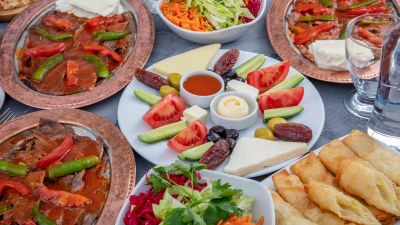 Hunkar begendi, imam bayildi, rice pilaf with eggplant, lamb dishes with dried fruits, keskek, Pilic Topkapi, honey chicken and babagannus are the first taste-appealing dishes that come to mind and that are also available in today's menus. Desserts such as vezir parmagi, hanım gobegi, baklava and keskul also leave mark on the palate and make Turkish cuisine richer. Drinks such as tamarind sherbet and basil sherbet accompanying meals are still kept alive as valuable recipes surviving from Ottoman cuisine.
Hunkar begendi, imam bayildi, rice pilaf with eggplant, lamb dishes with dried fruits, keskek, Pilic Topkapi, honey chicken and babagannus are the first taste-appealing dishes that come to mind and that are also available in today's menus. Desserts such as vezir parmagi, hanım gobegi, baklava and keskul also leave mark on the palate and make Turkish cuisine richer. Drinks such as tamarind sherbet and basil sherbet accompanying meals are still kept alive as valuable recipes surviving from Ottoman cuisine.
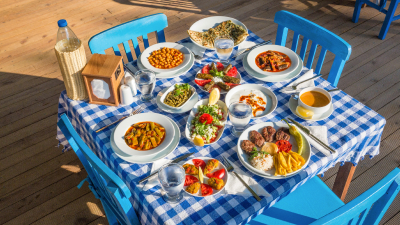 After the Republic was founded, Anatolian food culture became more diverse with the western influence. The culture of "olive-oil dishes" emerged with the inclusion of vegetables, plants and herbs beside meat and legumes. The story of Aegean cuisine, standing out with seafood, olive-oil dishes with vegetables, stuffed grape leaves and mezzes, adds another branch to the plane tree of Turkish cuisine.
After the Republic was founded, Anatolian food culture became more diverse with the western influence. The culture of "olive-oil dishes" emerged with the inclusion of vegetables, plants and herbs beside meat and legumes. The story of Aegean cuisine, standing out with seafood, olive-oil dishes with vegetables, stuffed grape leaves and mezzes, adds another branch to the plane tree of Turkish cuisine.
 As the dietary awareness, the content and chemistry of food, and improvement in cooking techniques drew attention, the gastronomy started to emerge; the foundations of a more practical and diverse cuisine archive have also been laid. Hummus from the Middle Eastern cuisine and European meat dishes offer a great combination on the same table. With olive oil dishes, meat dishes, mezzes, pastries and desserts, Turkish cuisine proceeds on its way enthusiastically without losing its essence and roots but with adding new notes to it.
As the dietary awareness, the content and chemistry of food, and improvement in cooking techniques drew attention, the gastronomy started to emerge; the foundations of a more practical and diverse cuisine archive have also been laid. Hummus from the Middle Eastern cuisine and European meat dishes offer a great combination on the same table. With olive oil dishes, meat dishes, mezzes, pastries and desserts, Turkish cuisine proceeds on its way enthusiastically without losing its essence and roots but with adding new notes to it.
Recommended For You
The Best Local Flavors of Anta...
Known as the jewel of the Medi...
Read MoreThe Most Popular Local Dishes ...
Gaziantep is known as one of T...
Read MoreQuick and Tasty: Open-Faced Br...
After a long, busy day, your t...
Read More